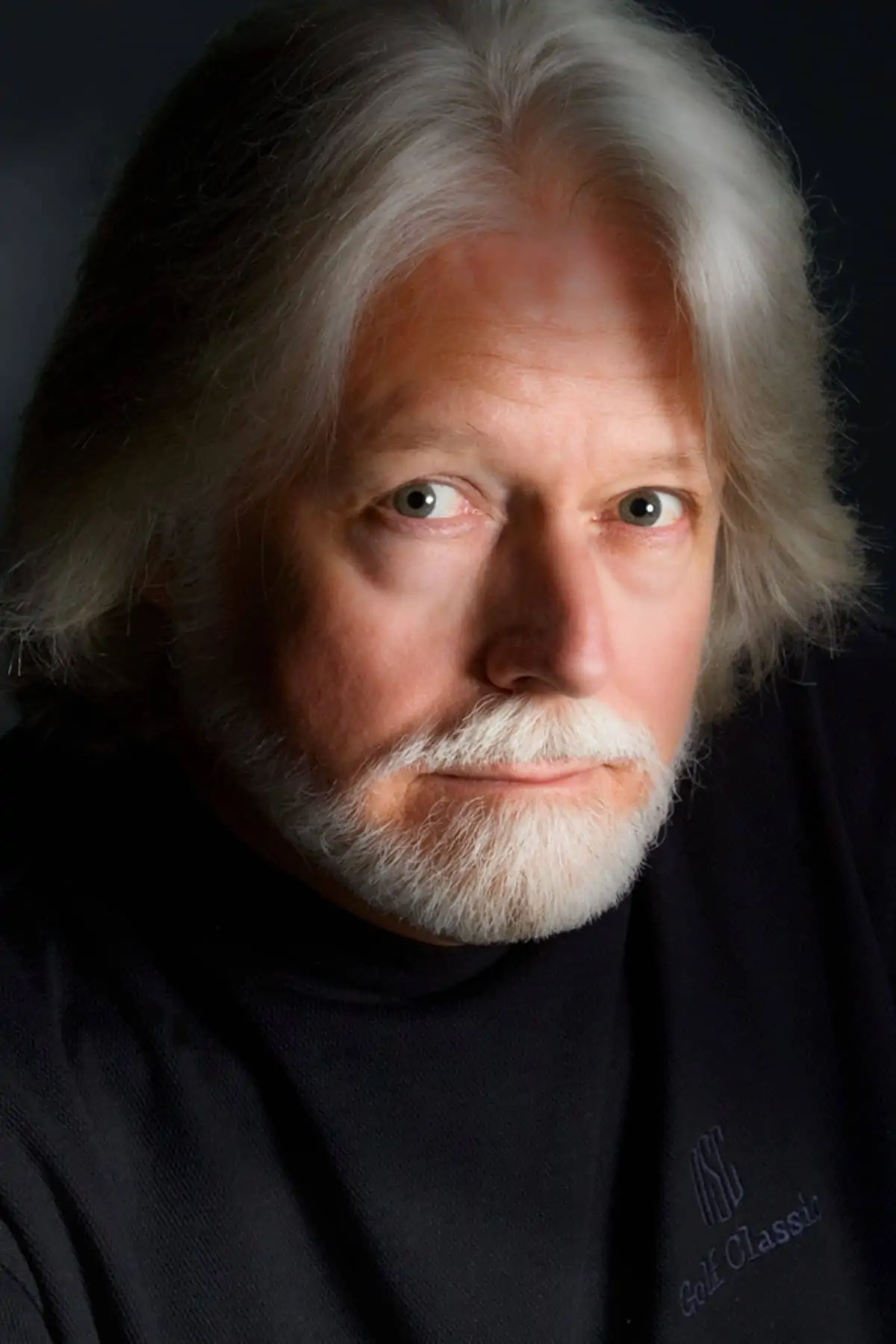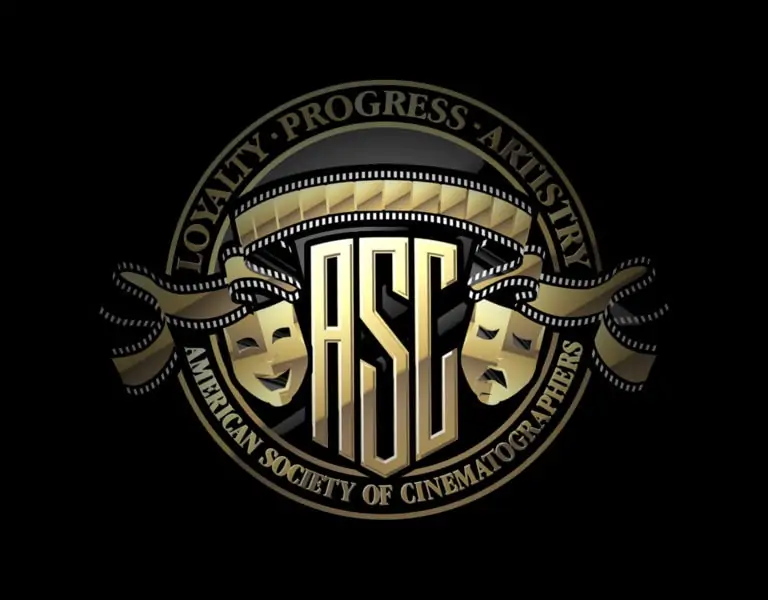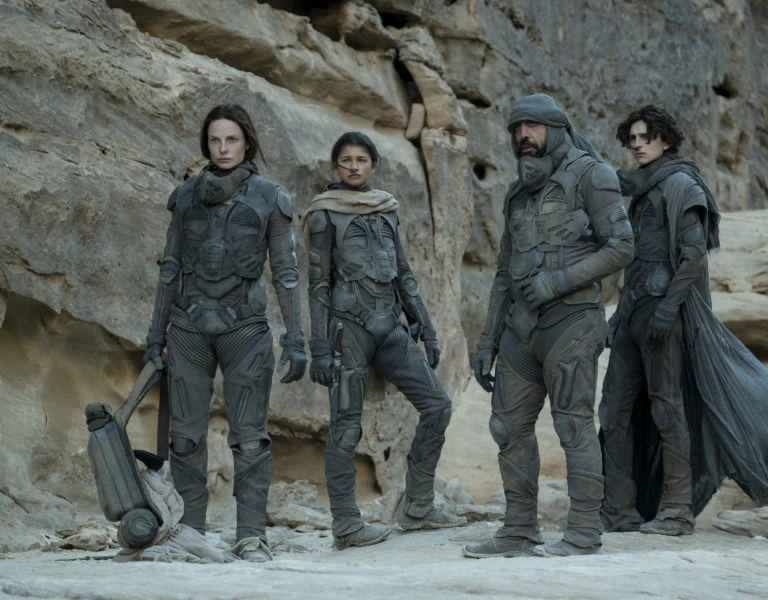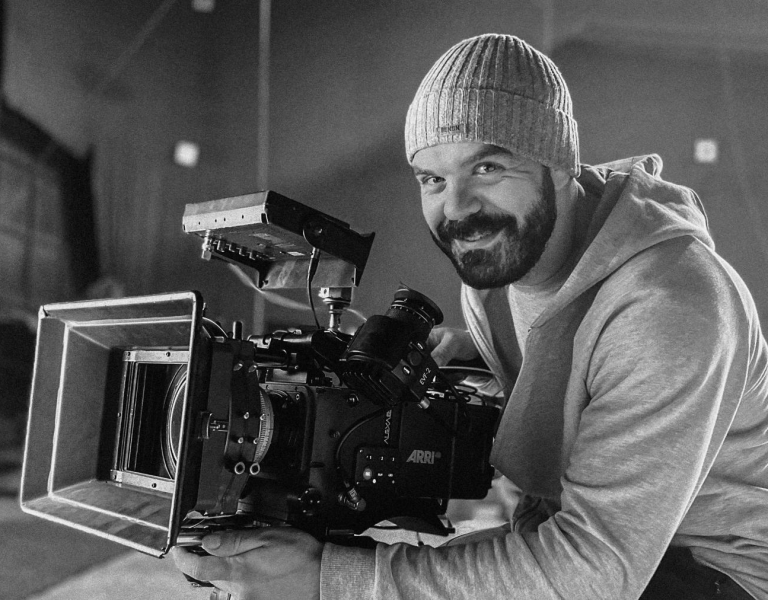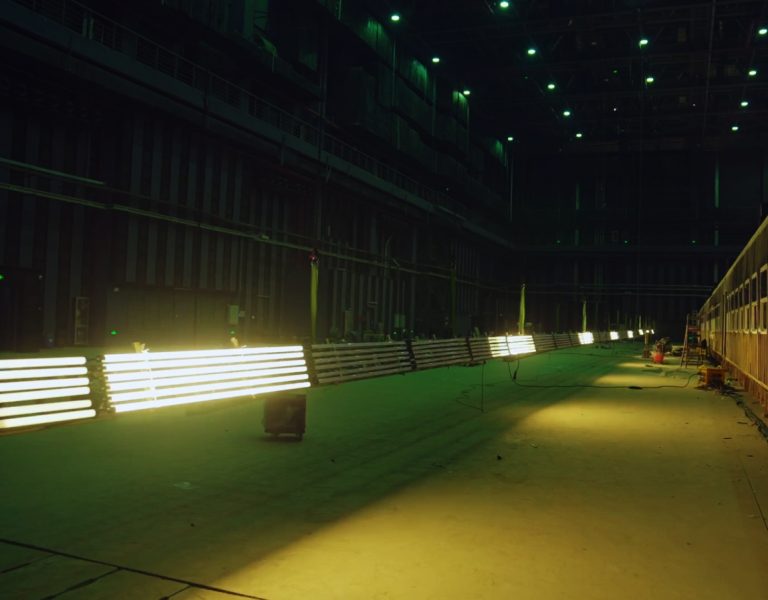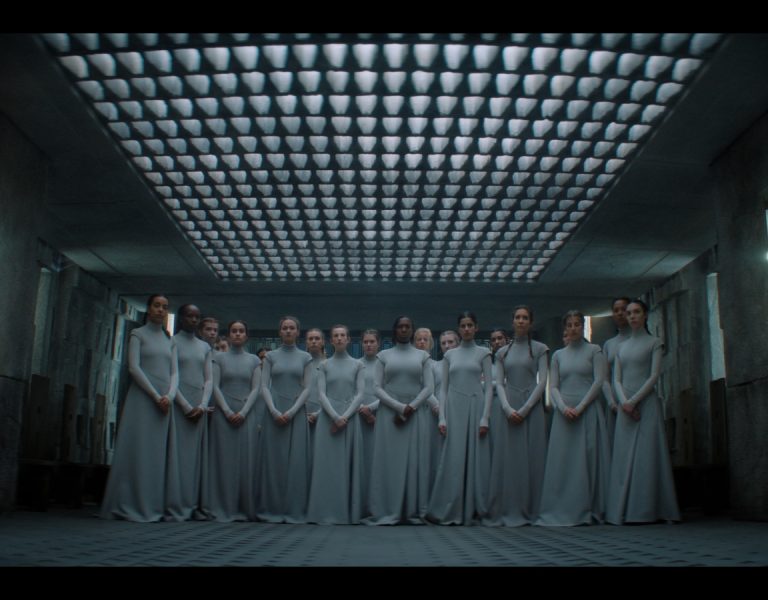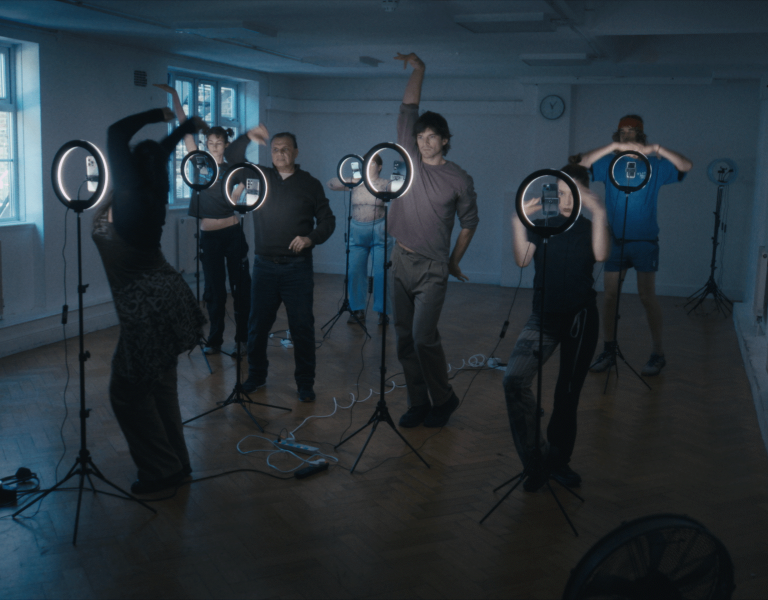“We made use of every single cobblestone we could get.” That’s not the first image that comes to mind when considering a historical drama about U.S. Navy fighter pilots, but it’s revelatory of the attention that Oscar-winning DP Erik Messerschmidt ASC and the rest of the cast and crew, brought to Devotion, the current film telling the story of Jesse L. Brown, the first African-American aviator to finish the Navy’s basic flight training programme.
Set during the Korean War, those cobblestones were used to relate the story of Brown, and his fellow shipmates and pilots – one of those, Thomas Hudner, who was white, became an inseparable friend, while others unhesitatingly bandied about the prejudices of their time – during a shore leave at Cannes. During the film festival.
Cannes was recreated in Savannah, Georgia, the Peach Tree state being where most of the production was shot, under rather strict COVID protocols.
And Savannah-as-Cannes, along with the actress playing Elizabeth Taylor (who briefly befriends Brown and company) wasn’t the only savvy historical doubling. There was, for example, replicating the aircraft carrier, since the still-intact ones from the era “weren’t ships you could take out to sea”. Production designer Wynn Thomas, however, “built a fabulous set – an aircraft carrier deck”, right on a landing strip in one of the Georgia airfields they were using. “The airplanes could land and take off from that set,” Messerschmidt recounts, ” (it was) really elaborate
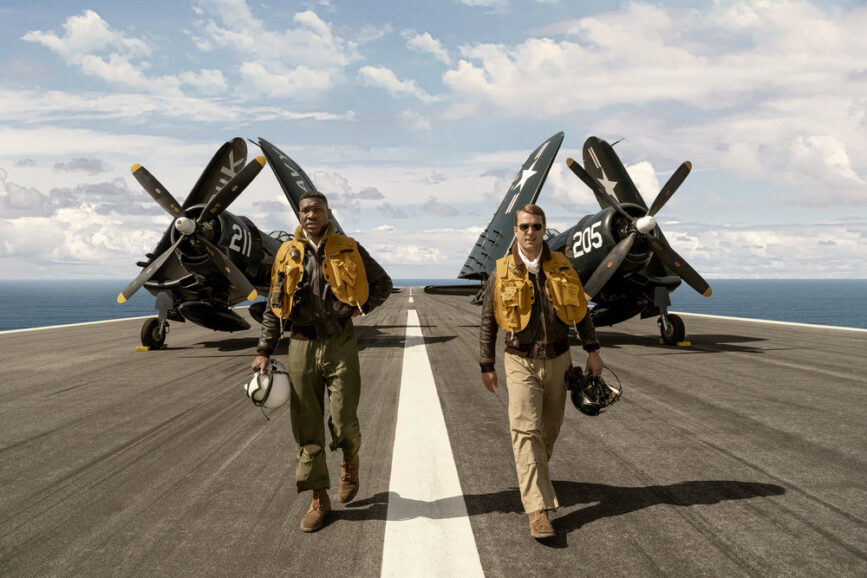
Other aspects necessary for a functioning aircraft carrier, like, for example, an ocean, were added later in post. And while real, restored Corsair planes from the period were landing and taking off from that landlocked deck, plane interiors were elaborately recreated on terra firma.
The action in those cockpits was captured by five RED Komodos, with each camera set only “in places where the camera could actually be”. They wanted to avoid moving cranes around, or trying “to give the audience impossible shots”, especially “knowing we wouldn’t be able to put actors in planes”.
Unlike the inevitable comparisons to Top Gun: Maverick, actors couldn’t be on actual plane flights for Devotion since “these planes weren’t two seaters.” On the other hand, they did shoot “in front of an LED wall – like Mandalorian”.
For the scenes actually set on the ground, though, they shot on a Panavision DXL2, with a RED sensor. Messerschmidt also “wanted to shoot Panavision glass on the film”, but the look he was going for, “to bridge the gap between classic and modern… wasn’t something I felt I could get off the shelf”.
Instead, he went to Panavision’s storied VP of Optical Engineering, Dan Sasaki, who “did some tweaking to some Panaspeeds”, which is as good a way as any to describe Sasaki’s usual technical magic. The glass “had this slightly vintage look”, and let Messerschmidt shoot “LF in 2.2 on the DXL”, resulting in “kind of a TODD AO 70mm large format”.
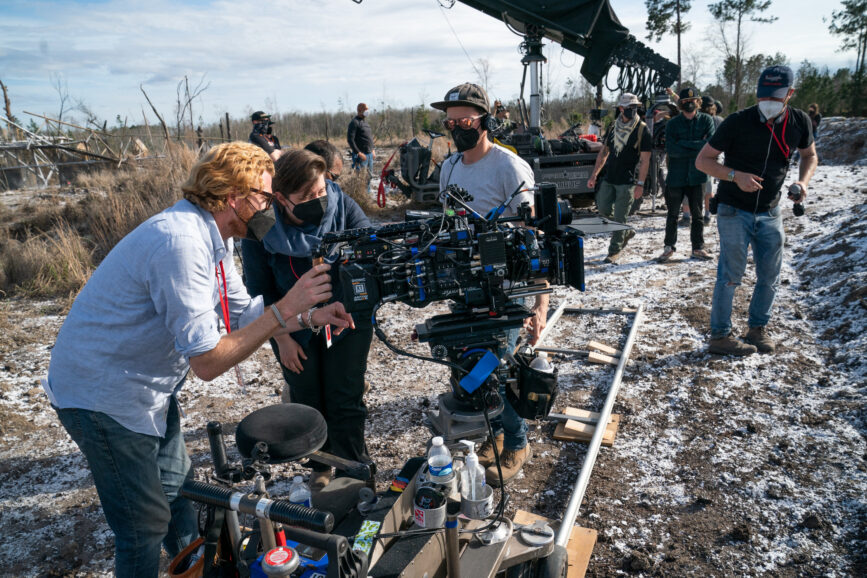
Which in turn comported with the mandate from director J.D. Dillard, who “sat down (and said) we wanted to make a movie in the style of classic Hollywood,” which the film certainly succeeds in conveying, especially with compelling lead performances from Jonathan Majors as Brown and Glen Powell as Hudner.
Another challenge for Messerschmidt was coordinating the aerial crew, who’d often be flying over sets that could be “300 miles away” from where the production was based. Also likely to be far away, in the public’s mind, was the Korean war itself, which is neither recreated as often in movies as World War II, or “the Ektachrome look of the Vietnam war. The audience doesn’t have a lot of references to associate with it.”
Messerschmidt and the crew did study up on documentary footage from the conflict, including the pivotal Battle of Chosin, where Brown takes a portentous flight. They had a lot of access to documentary footage, much of it in colour, though he says, “In a way we were a bit lucky – there’s a lot of predisposed ideas of what a WWII movie looks like,” but not so much one set in Korea.
The war itself, even if relatively forgotten compared to those which came before and after, “was quite brutal”, and overall, given the conflict, the anti-Communist paranoia at home, and the innate racism in US society, it was “quite a dark time for this country”.
Messerschmidt says they looked at the film “as a drama first, and a character piece. The war is the situation the characters end up in.”
It’s an interesting chicken-or-egg supposition: Does the war reveal character? Or do characters simply wind up in wars because the tides of history are too hard to resist?
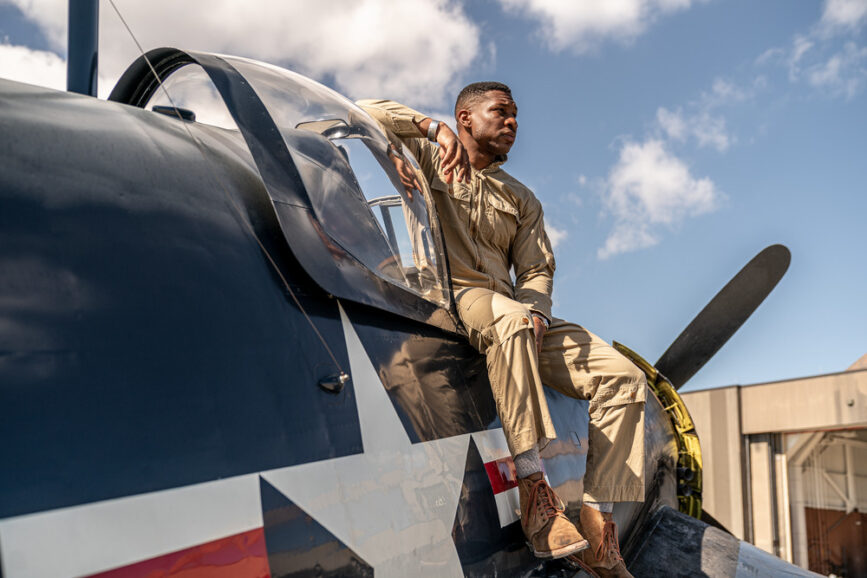
Maverick moves
Also recreating a bit of history – though in this case pop culture history, rather than of actual war – was the aforementioned Top Gun: Maverick. Like Devotion, the story involves lots of flying, and paeans to the military – and both have Powell in the cast.
DP Claudio Miranda ASC ACC recently held forth at the ASC clubhouse, along with Maverick’s director Joseph Kosinski, for an award season chat over dinner, as they walked the attendees through a series of clips from the film, explaining how some of those seemingly impossible shots were done.
Which is also something Messerschmidt did with Miranda, with some of Devotion’s own seemingly impossible shots. “I showed pictures to Claudio, and he was jealous,” he recounts, particularly of where they got to place cameras – since their wingless cockpits were on soundstages, and Miranda’s plane interiors were still airborne, with camera placement needing to yield, of course, to the plane’s operability.
Also, somewhat soberingly, Miranda noted that cameras “had to be rigged to not interfere with (possible) ejection”. Still, while he was told he’d be “lucky to get one camera in there”, ultimately, “we got six.” Though as Kosinski added, “One day we had 26 cameras going.”
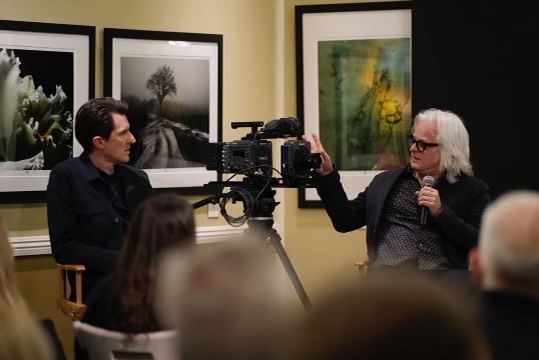
As for the lens-loaded planes, happily, since they weren’t flying any actual combat missions, Miranda also asked “to take out any plane parts not related to flying”, since the obliterating-the- enemy equipment wasn’t needed, thus allowing more room.
Miranda, like Messerschmidt, would often have to adjust those cameras for sets hundreds of miles away, and would find himself “pulling a stop”, based on his best guesses, after seeing that “oh, it looks cloudy over there.”
Kosinski noted that, going back to Tron: Legacy, the pair has “done five films together, and 30 to 40 commercials”, and like a lot of directors and DPs, like to use those mini-shoots as proving grounds for new ideas and equipment, trying to “do commercials as test beds”, including, in this case, with the Sony Rialto extensions, which eventually found their way into the cockpits, allowing for separation of image sensor and the VENICE camera bodies.
When not shooting in planes or adjusting for weather over the next ridge or two, back on the ground, Kosinski said many of the exteriors were shot in the morning, or late afternoons – all part of “Top Gun’s amazing fantasy world, where everything is always dusk”.
Top of the class
Another kind of evening glow was created by cinematographer Carolina Costa AMC, who shot the pilot – along with some additional episodes – for Amazon’s High School, based on the New York Times best-selling memoir from Canadian alternative music duo Tegan and Sara, twins who shared both a knack for tunesmithing, and a queer adolescence, in ‘90s Calgary.
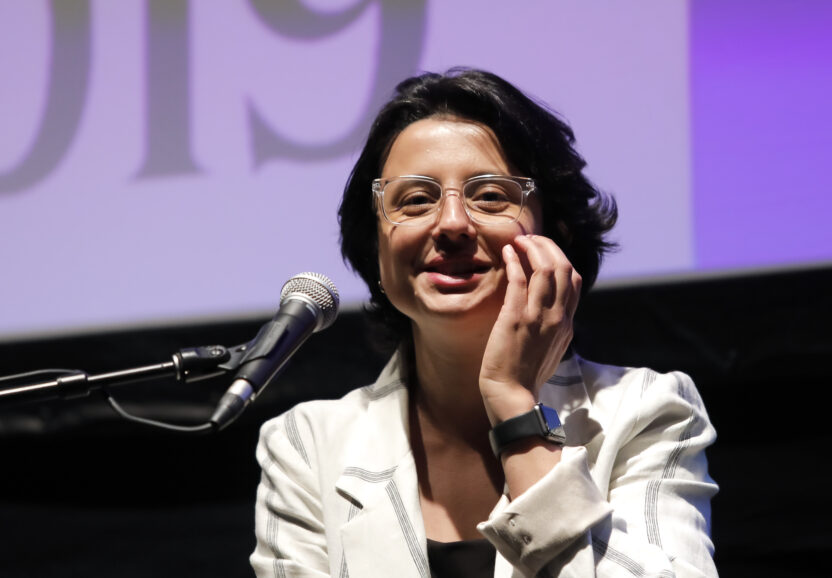
Of shooting there, she observed that while “a lot of people go shoot in Calgary, it’s never supposed to look like Calgary”, as its locales often double for the American Midwest, and elsewhere.
But they were also recreating a fin de siècle look for the series too. With director/producer Clea DuVall, she went in search of “very specific areas. We went picking streets that had the architecture – the houses built in the ‘60s and ‘70s.” Production designer Trevor Smith then “went through all the spaces we wanted and picked locations (so) that we had to do very little work”. Indeed, some of those “exterior” houses were also locations for the series, replete with “frilly curtains and all that stuff we love from the ‘90s”.
Additionally, “the show is shot almost entirely with a 1.85 aspect ratio. Clea, Laura [Kittrell, writer] and I loved the films from the ‘90s that had that aspect ratio. It was also important to feel the height of the spaces and how claustrophobic suburbia could be. Also, Trevor and I discussed a lot about being able to see the ceiling and making the stage look and feel like a real location.”
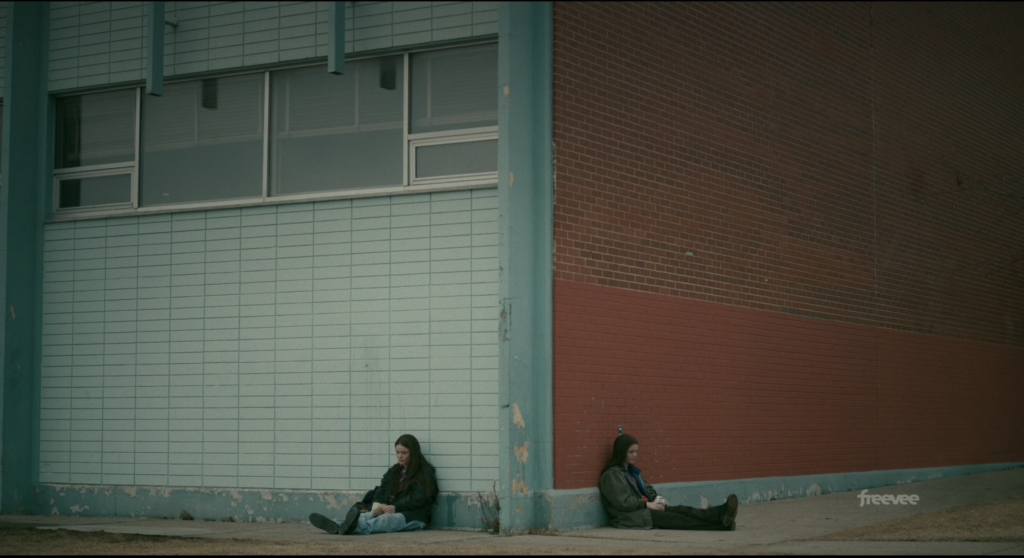
More ‘90s – and Calgary – inspiration was drawn from “the home videos that Tegan and Sara made – we kind of built on that.” Along with Nirvana music videos, Gus Van Sant films, and a few other contemporaneous inspirations.
It was captured with a pair of Alexa Mini LFs with Tokina lenses. “We looked at 20 different sets of lenses, but there was something about (the Tokinas) that me and Clea immediately reacted to – ‘that’s our grunge.’”
They went on to “dirt it up with a lot of green”, to complement lighting ”with a lot of warm lights in the interiors”, extending out to the sodium streetlight haze in the cold Calgary nights.
The sodium especially, they thought, “is what the ‘90s looks like.” Her gaffer, Tim Dutchak, “found about ten old sodium lamps”, to go with a couple of extant streetlights “that were still sodium”.
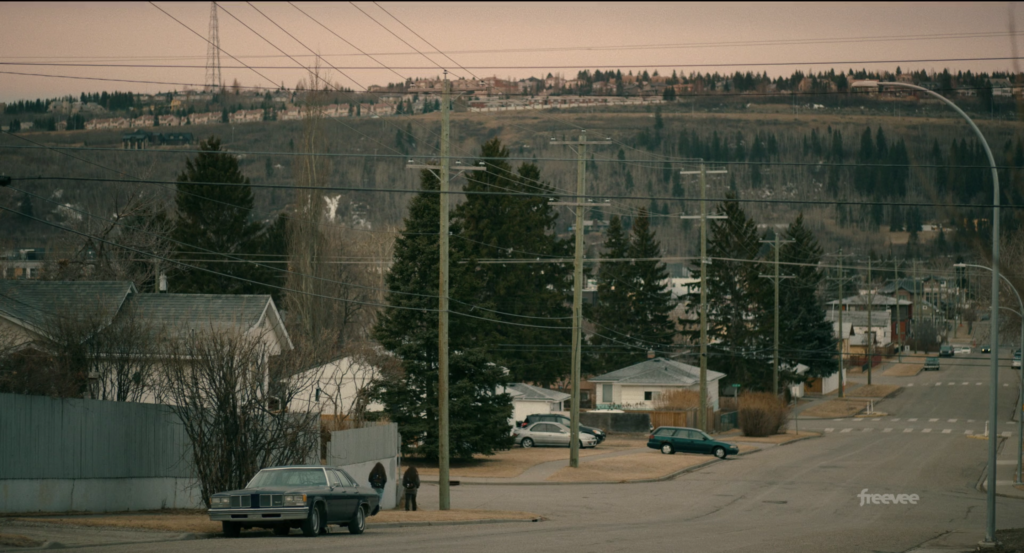
They even “brought those sodium lamps to the stage”, for their own particular twist on mythic magic hours but suffused with teen angst instead of the military kind. And a lot of first love, or at least, new love.
And given that High School’s narrative switches POVs between each twin (and eventually, other characters), some of those first-person emotions were captured with “extremely shallow depth of field (with) beautiful bokeh around”. Along with the help of some Angénieux glass and “very few visual effects to extend that sensation. Just with blocking and framing, able to do that without the smoke and mirrors of funky lenses – I love how honest it feels.”
Honesty and love seem like pretty good notes on which to head into the holiday season. We’ll see you back here somewhere in the midst of the 12 Days of Christmas, the candles of Hanukkah and Kwanzaa, and the cusp of a whole new year.

